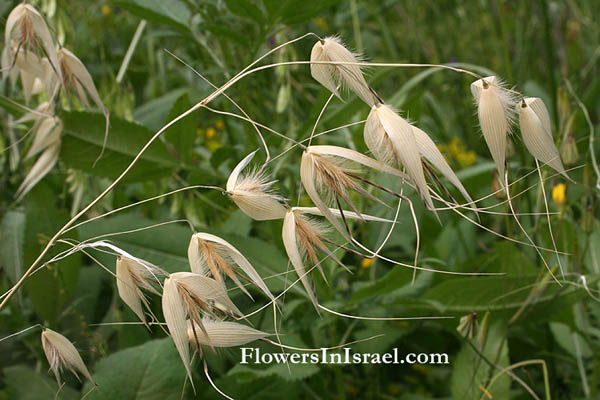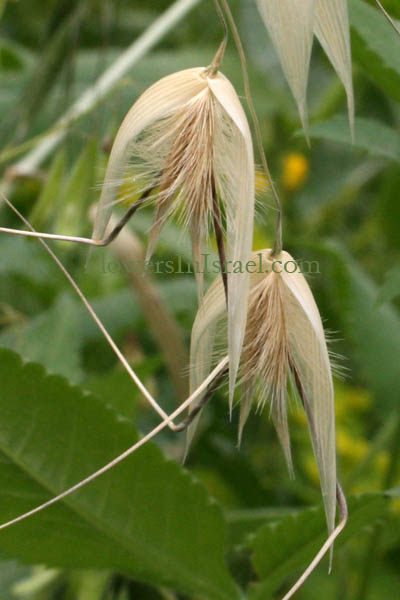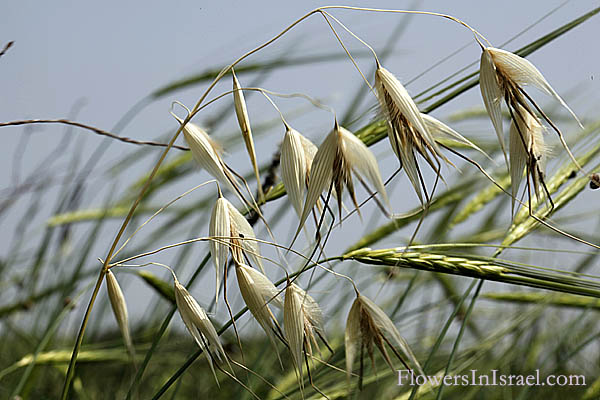Wild red oat, Winter wild oat,
Hebrew: שיבולת-שועל נפוצה, Arabic: شوفان بري
| Scientific name: | Avena sterilis L. | |
| Synonym name: | Avena affinis Bernh. ex Steud; Avena algeriensis Trab.; Avena byzantina K.Koch; Avena ludoviciana Durieu, Avena sativa | |
| Common name: | Animated oat, Sterile oat, Wild oat, Wild red oat, Winter wild oat | |
| Hebrew name: | שיבולת-שועל נפוצה | |
| Arabic name: | شوفان بري | |
| Family: | Graminea (Poaceae), Grass Family, משפחת הדגניים |

|
| Life form: | Annual | |
| Stems: | 30-120 cm, initially prostrate, erect | |
| Leaves: | Alternate, entire | |
| Inflorescence: | Panicles 10-45 cm long, 5-25 cm wide; Spikelets 24-50 mm, with 2-5 florets | |
| Flowers: | Green and nodding panicle, flowers connate and falling as one unit at maturity; Lemmas 25-40 mm long, hirsute with a geniculate awn 4-9 cm long; floret with bearded callus | |
| Fruits / pods: | Caryopsis | |
| Flowering Period: | March, April, May | |
| Habitat: | Batha, Phrygana | |
| Distribution: | Mediterranean Woodlands and Shrublands, Semi-steppe shrublands, Shrub-steppes, Deserts and extreme deserts, Montane vegetation of Mt. Hermon | |
| Chorotype: | Med - Irano-Turanian | |
| Summer shedding: | Ephemeral |

Derivation of the botanical name: Avena, Latin for oats. sterilis, sterilized. affinis, related or similar to; neighbouring, allied to, akin to. algeriensis, Algerian. byzantina, Istanbul, classically Byzantium. ludoviciana, Louisiana or former Louisiana Territory, U.S.A. sativa, sown, planted, cultivated. The Hebrew word: שיבולת-שועל, shibolet-shual, oats, from Aramaic: שבלתא, shibalta. Oats are mentioned in the Mishnah Kil'ayim, משנה כלאים א׳:א׳.
The morphological differences between Avena sterilis, שיבולת-שועל נפוצה and Avena fatua, שיבולת-שועל שוטה:

|